The hills are alive with the sound of shuffling feet. Be it by crampon, hiking boot, trainer or snow shoe, the rhododendron forests and glacial valleys of Asia are increasingly being conquered by an ever-hungry number of intrepid travellers; and an avalanche of guidebooks full of classic trails – from Everest Base Camp in Nepal to Mount Emei in Sichuan, China – are hard on their heels. But these routes are fast being over-trekked with the consequences encroaching on local environments and undermining the sustainability of indigenous cultures. The Annapurna range near Mustang in Nepal has changed beyond recognition since 1960s trekkers first ventured into the Muktinath and Jomsom valleys: nowadays, trekkers are so common that it is referred to as the Apple Pie trail.
Yet while Malaysia’s Mount Kinabalu, the highest mountain in Southeast Asia, or China’s Tiger Leaping Gorge in northern Yunnan regularly make it to the top of the novice trekker’s wish-list, a number of less explored routes and possibilities are opening up. So for that remote, once in a lifetime trekking experience, where are the best places to lace up those boots and reach for the skies?
BEST OFF THE BEATEN TRACK TREK
Kalaw to Inle Lake, northern Shan State, Myanmar
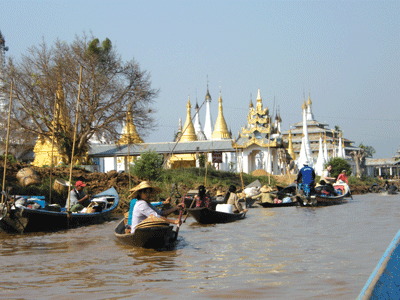
Behind the bamboo curtain – and away from the mountains of political problems and paperwork in its now defunct capital Yangon – Myanmar is a haven of teakwood monasteries, saffron-robed monks and golden-topped pagodas. In northern Shan State, to the surprise of many outdoor purists however, a nascent trekking industry is starting to find its feet in the timid shadows of the Shan hills and on the fringes of the unearthly turquoise Inle Lake. In particular, the former colonial British hill station of Kalaw – an eight-hour bus journey from the faded palaces of Mandalay to the West – is becoming a beacon for bold trekkers looking for something as wild, untamed and inaccessible as the Kelabit Highlands in Borneo but without the exorbitant entry fees. For many travellers, it is a literal heaven on earth.
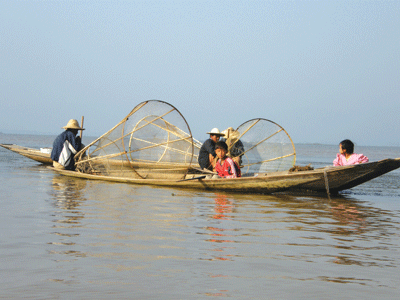
Taking between two to three days to cover, the easy 45km hike from Kalaw to Nyuang Shwe crosses a gentle biscuit-brown spine of forested foothills, before snaking like a Burmese python through a garrison of hill-tribe villages – dotted with Palaung, Pa-O, Intha and Shan peoples – and descending to the floating villages, floating gardens and the ethereal floating monastery of Inle Lake. An easy to moderate trip – the stifling summer heat should prove to be the only real obstacle – this route promises to awaken your senses with a rarely seen cultural tableau of indigenous markets, floating cheroot factories and fleets of skeletal boats rowed by the feet of the lakeside’s fishermen.
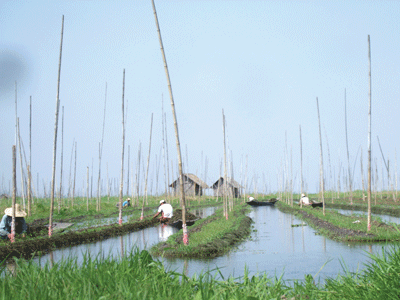
Like an economically-challenged distant relative of Italy’s Lake Como or Switzerland’s Lake Lugano, Nyuang Shwe’s unexpected homegrown wines, in particular the Aythaya Vineyard’s labour of love, makes for the perfect tonic to celebrate your arrival into a world rarely seen by outside eyes. From the sublime to the surreal, at the floating Nga Phe Kyaung Monastery – be it for entertainment or spiritual enlightenment – the golden-faced monks have even taught the cats how to jump through hoops. “This is Burma,” wrote Rudyard Kipling over a hundred years ago. “It is quite unlike any place you know about.” Thankfully, as a growing number of happy trekkers are starting to realise, some things never change.
When to go: November to February. While the temperatures in Yangon can easily push 400C during this time the cool hill towns are at their driest.
Difficulty: Easy
BEST ADVENTUROUS TREK
Gunung Rinjani, Lombok, Indonesia
Strung like a collection of the world’s largest carabiners (climbing clips), Indonesia’s archipelago of 17,000 islands pitches more trekking possibilities than any other Southeast Asian country – and in Indonesia that often comes with a marked increase in temperature.
Loaded with burning peaks, from Krakatoa to Java’s most explosive fireball Gunung Merapi outside Yogyakarta, Indonesia’s volcanic treks are an adrenalin-fuelled adventure for both hill seekers and thrill seekers alike. But it is the four to five day trek from Senaru up the knee-trembling sides of Lombok’s most active volcano Gunung Rinjani that has quite literally set the trekking world alight. As the second highest volcano in Indonesia, it forms part of the infamous ring of fire that encircles the basin of the Pacific.
Overlooking the palm-fringed retreats of the Gili Islands, and in the company of the evergreen shades of Bali on the horizon, a trek up to Rinjani’s summit is like entering a lost world: the jungle canopies envelop trekkers, monkeys and birds screech and sing out a tropical cacophony, and several gushing waterfalls create an ambience more suited to Jurassic Park. It is then beyond the jungle walls that volcanic landscapes more suited to Lord of the Rings take hold.
Upon reaching the crater’s edge, walkers peer into the idyllic chasm of the Segara Anak crater lake, within which juts out the active volcano Gunung Baru (2,363m). Towering above this, however, sits the peak of Rinjani itself; a 3,726m colossus of rock, smoke and fire. At sunrise, when its volcanic lake mirrors both peaks to hypnotic effect, it provides the most perfect photographic opportunity without the by-product of volcanic ash or even too many tourist elbows blotting the landscape. For adventure freaks, it’s also possible to get close enough to the billowing sulphuric smoke without singeing your eyebrows.
Post-trek, hot springs near the crater lake – sought after for their healing powers – are perfect for soothing both worn out limbs.
When to go: During the monsoon season, trekking on Rinjani is prohibited as the area is frequently prone to landslides and mud falls. The best time to visit is between November and April when the weather is cooler and the skies burn a brilliant bald blue – ensuring the jaw-dropping views from Rinjani’s summit will burn onto the back of your eyelids for years to come.
Difficulty: Moderate
BEST HIGH ALTITUDE TREK
Goyko Ri, Everest Region, Nepal
The history of local trekking in the Nepali Himalaya is so antique that it could have been etched out in Devnagri Script on a sheaf of russet parchment.
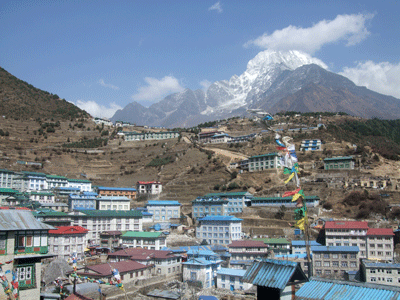
Today, the archaic grandfather of all trekking destinations, Sagarmatha National Park in Eastern Nepal is where more dreams and desires are shattered – and more legs broken – than any other mountainous region on Earth.
Home to the world’s tallest peaks – Everest, Cho Oyu, Makalu and Nuptse included – it is a magnificent range of white and silver crowns that consistently harbours beautiful water colour pinnacles whatever the season. Considered one of the finest panoramas anywhere in the country, Gokyo Ri – in a neighbouring valley to Everest Base Camp (5,364m) – is the place to experience the world’s highest mountains up close, but without the burgeoning crowds.
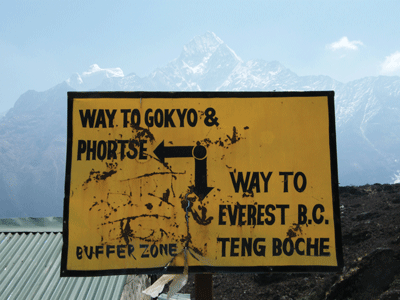
The 10 day trip, which takes in the Sherpa villages of Namche Bazar, Khumjung, Dole, Machermo and Gokyo itself, needs to be taken very slowly.
The trek’s high altitude, reaching to stratospheric heights of 5,350m, can bring on acute mountain sickness (AMS) at very short notice. In the words of ancient Chinese philosopher and sage Confucius, “it does not matter how slowly you go as long as you do not stop”.
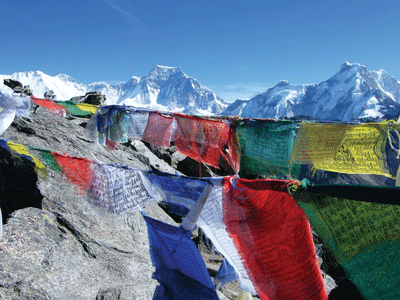
Now lined with eco-lodges, pizzerias, gourmet coffee shops – including a one-off Starbucks affiliate – and the highest internet cafes in the world (based at 5,010m), the Everest region is an increasingly sophisticated affair – the days of wind-blown tents and cold mugs of weak tea are long gone. Additionally, a more active local Sherpa population, which insists on operating solar showers and carbon footprint fortified teahouses, is helping ensure that the trek to Gokyo Ri (5,357m) will be protected from its own popularity for years to come.
When to go: Best time is the warm and dry season between May and mid-October.
Difficulty: trying
BEST SPIRITUAL TREK
Ganden to Samye, Tibet
Heinrich Harrer, Austria’s most famous mountaineer, certainly knew a thing or two about the best places to stretch his Lederhosen-wrapped legs. Fleeing from British-governed India under the shadow of the Second World War, he crossed the border to the northeast making it as far as Lhasa in Tibet. During his now famous seven years in exile in Tibet, he not only befriended the Dalai Lama through a number of charitable acts but brought Western attention to some of the world’s most uplifting Himalayan treks.
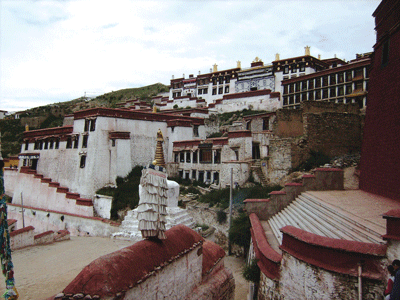
In particular, the 80km Ganden to Samye mountain route – as frequented by Tibetan pilgrims and traders for centuries – had instantly become a classic, merging some of the world’s best high-altitude scenery with some head spinning spiritual enlightenment. Starting at Ganden village (4180m), home to one of the three great Gelukpa monasteries, the four to five day trek crosses two 5,000m plus Himalayan passes, each one strung together by ruby and indigo prayer flags, and visits remote mountain lakes and villages, flanked by the silhouette of some of the world’s most inspiring peaks.
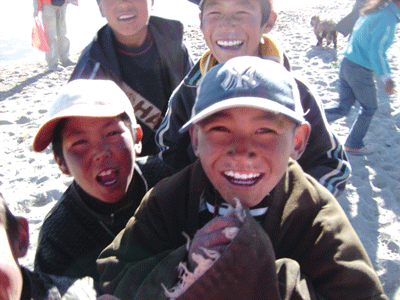
As many of the villages can still only be reached by foot, for many, it is still considered more mystical than the romanticised valleys of Kashmir or the fabled Shangri-La as recounted by British author James Hilton. The Zhukar La (5,250m) and Chetur La (5,100m) passes are connected by a high windswept valley, the path winds down to the village of Samye (3,540m), home to the oldest Buddhist monastery in Tibet and a collection of timeless sand dunes.
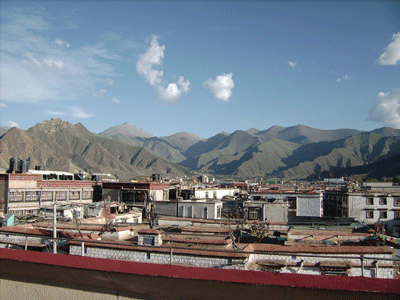
As the trek must start and end in Lhasa – Chinese government sanctioned permits are required to travel anywhere outside of Tibet’s capital – returning to the home of the Potala Palace may be the perfect denouement for your spiritual journey. By completing a kora (a circular religious pilgrimage) of the nearby Jokhang Monastery, past haphazard stalls brimming with handmade papers, pashminas and prayer wheels, carpets, dance masks and Thankas (traditional painting scrolls), it may even be enough to make you a convert for life. Whilst walking this ribbon of broken concrete, the rhythm of “Om Mani Padme Hum” – the omniscient Tibetan Buddhist mantra – should be the perfect accompaniment to syncopate your footsteps.
When to go: May to October
Difficulty: Moderate. On this self-sufficient trek, all provisions must be carried and a guide and porter are compulsory. Additionally, the high altitude of the Tibetan plateau makes acclimatisation in Lhasa (3900m) absolutely mandatory to prevent any symptoms of AMS.
TREKKING SAFELY
Statistics show that travelling to the mountains will probably be the most dangerous part of your trip – especially if you’re driving.
Check out carefully where you are going prior to travelling and realise the conditions can be quite different at high altitudes.
If you are in doubt of the route or your own ability, it is better to hire a guide and porter from a reputed local trekking agency.
When trekking at altitude, the most important rules are: trek slowly; never ascend more than 400 metres per day; have a rest day every three to four days; and abide by the maxim “climb high, sleep low.”
Bring adequate clothing, a warm sleeping bag and a good tent. Day hikers often get in trouble by assuming they will not be spending the night.
Do not forget to carry water, oxygen and food and a mobile phone in good working condition with emergency additional batteries.








